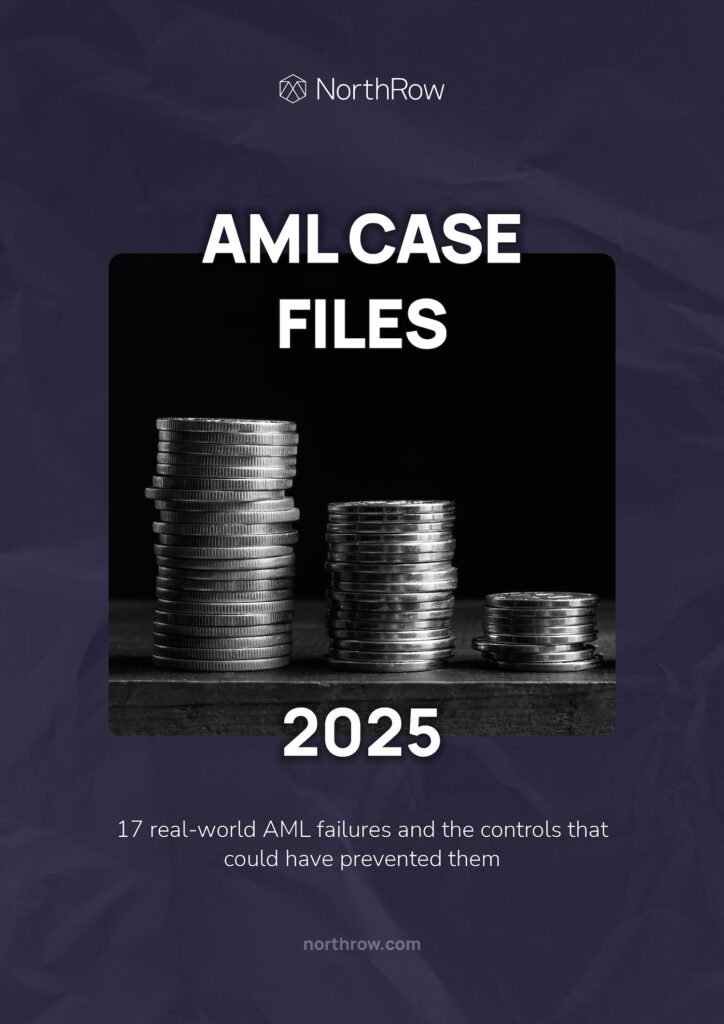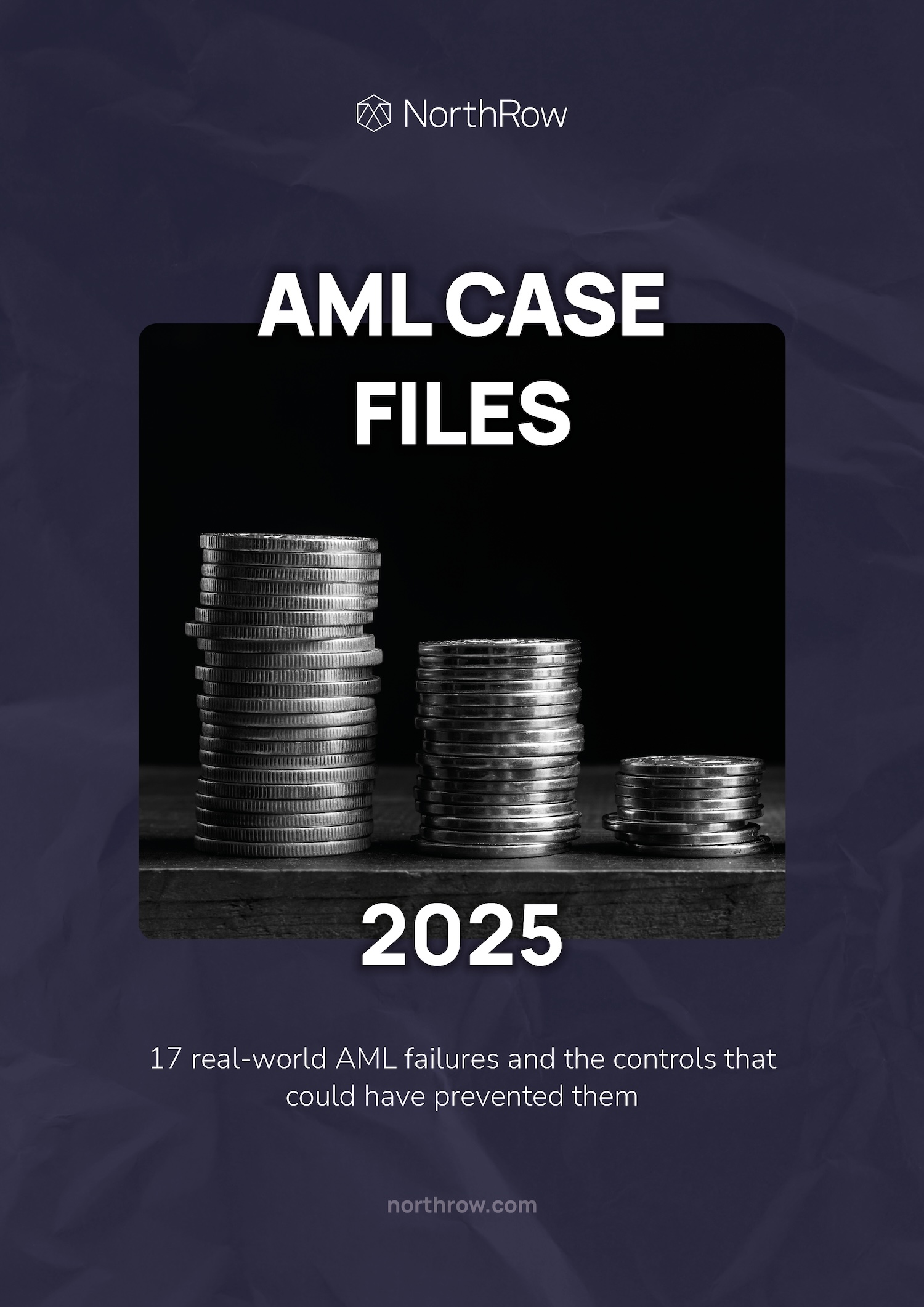There’s no nice way to say it: Know Your Business (KY) checks are one of the most error-prone processes in financial crime compliance.
It’s messy, it’s repetitive, and if you’re still relying on spreadsheets, emails, or outdated onboarding portals, you’re carrying more risk than your team probably realises.
And that’s the problem. Because when KYB processes break down, it often fails quietly. A document gets uploaded but never reviewed. A company ownership structure changes, but no one refreshes the file. A sanctions hit is flagged but buried in someone’s inbox. These aren’t hypothetical risks, but common failure points across firms of all sizes.
Meanwhile, your obligations under the Money Laundering Regulations 2017 haven’t changed. You’re still required to maintain accurate, up-to-date records, assess ownership and control, identify higher-risk entities, and act on red flags. If something slips through the cracks, it’s your liability.
You might also like: A complete guide to Anti-Money Laundering (AML) regulations in the UK
So how do these cracks form? We often see the same KYB problems show up again and again. Here are three of the most common and what you can do to avoid them.
1. Disjointed data sources make it harder to spot compliance risks
You can’t act on what you can’t see. If beneficial ownership data lives in one system, corporate structure is manually diagrammed in PowerPoint, and sanctions screening is outsourced to a third party with limited transparency, you’re working with an incomplete view of risk.
This fragmentation happens for a few reasons. Some firms have built up a patchwork of tools over time. Others have inherited processes via acquisition or relied on third-party administrators with different systems. But regardless of how it started, the result is the same: analysts waste time moving between systems, copying data into spreadsheets, and hoping nothing gets missed.
The risks here are real. A director flagged in a sanctions screening tool might be the same individual who appears on three other customer files, none of which have been linked together. Or a change in Ultimate Beneficial Ownership (UBO) might get recorded in Companies House but never reflected in your internal system. When KYB checks are siloed, things fall through the gaps.
And while these silos might be tolerated internally, regulators are paying closer attention. They want to see a clear, connected view of your customer relationships, not fragmented documentation and assumptions.
What to do:
Push for a single source of truth that centralises your KYB data. With platforms like NorthRow, you can integrate directly with authoritative data sources for each stage of the KYB process:
- Automated adverse media checks from trusted data partners
- Real-time business registration and filing data from Companies House and global equivalents
- Corporate ownership registries for UBO identification and verification
- Sanctions and PEP watchlists from leading providers
This gives you clear visibility over each business you’re onboarding or reviewing, without having to cross-check between spreadsheets, inboxes, or disconnected systems. When everything sits in one place, your team can spot risks faster, and you’re less likely to miss something that matters.
2. Relying on one-off checks instead of ongoing monitoring
Too many KYB processes are still treated like a one-and-done task during onboarding. But regulatory expectations are shifting rapidly, and ongoing due diligence is no longer optional, especially for higher-risk entities or jurisdictions.
Businesses change constantly. A company that looked above board on day one might appoint a sanctioned director, restructure its ownership, or become subject to adverse media within six months. If your KYB process doesn’t include a mechanism for detecting those changes, you’re flying blind.
You might also like: How often should we undertake customer due diligence (CDD) for a client?
This is especially dangerous when your risk scoring framework is built on static assumptions. A “low-risk” customer isn’t low-risk forever. Without continuous monitoring, you can’t detect when that profile shifts and by the time you do, it may be too late.
Why does this happen? Often it’s a bandwidth issue. Teams are stretched thin, and onboarding clients quickly takes priority because it’s a visible bottleneck. Ongoing reviews get deprioritised or logged as tasks in a future audit if they happen at all.
What to do:
Set up ongoing monitoring logic based on entity risk levels. For example:
- High-risk customers → full KYB refresh every 3–6 months
- Medium-risk → annual check with interim monitoring
- Low-risk → event-driven updates based on data triggers
Tools like NorthRow allow you to build this logic into your workflow. When a director is added to a watchlist, or a UBO changes according to registry data, you’re alerted immediately and can review only the entities that actually require attention. This targeted approach saves time, reduces unnecessary checks, and helps you stay compliant without overwhelming your team.
3. Manual reviews are slow and introduce human error
Pulling documents from registries. Manually checking beneficial ownership. Copying and pasting details into systems. If your analysts are still stuck in admin-mode for most of the KYB process, you’re wasting time and increasing your margin for error.
Even the best compliance analysts will occasionally muddle up a digit or overlook a change in control when pressed for time. These errors aren’t malicious, they’re just a consequence of process overload. But regulators won’t always care why the mistake happened. Just that it did.
And it’s not because your analysts aren’t diligent. It’s because no team can operate at 100% accuracy when buried under low-value, repetitive tasks. Errors are inevitable when your KYB process relies on muscle memory and manual effort.
More worryingly, manual reviews make your process harder to scale. If onboarding 10 customers takes 2 days, what happens when you need to onboard 100 in a week? Or refresh 300 files before year-end? Without automation, growth and compliance are in direct tension.
What to do:
Automate the high-friction parts of KYB: pulling registry data, validating company numbers, screening for sanctions and PEPs, and populating your case management system. This frees your team to focus on more complex risk decisions not admin. And it means your review process isn’t being held up by PDF downloads and Google searches.
Automate wherever possible. KYB platforms like NorthRow allow you to:
- Auto-pull company registration data directly from official registries
- Automatically validate company numbers and legal names
- Screen for sanctions, PEPs, and adverse media in real time
- Create comprehensive cases with structured information for analyst review
This means your team spends less time finding data and more time making decisions. It also builds consistency into your processes – every file is checked the same way, with fewer chances for detail to be missed. And when regulators ask for audit evidence, you’ll have a complete digital trail with minimal gaps.
What’s next?
If any of the above sounds familiar, you’re not alone. But it doesn’t need to stay this way.
Compliance leaders are increasingly shifting KYB into automated systems built specifically for the job. Not to replace analysts, but to give them the visibility and control needed to manage risk properly.
The benefits compound quickly:
- Fewer manual touchpoints mean reduced human error.
- Centralised data makes audits and reporting faster.
- Automated decisioning creates consistency across cases.
- Real-time alerts keep you ahead of emerging risk.
- Ongoing monitoring helps you stay compliant over time.
The bottom line? Manual KYB isn’t built to scale. And it isn’t built for today’s regulatory expectations.
If you’re spending more time chasing documents than assessing actual risk, or if your gut tells you something could be slipping through the cracks, it probably is. That’s the time to act.
Start by reviewing your current KYB workflow. Map out the steps, the tools, and the people involved. Then identify what could be automated, and where visibility is lacking.
It’s not about fixing everything at once. It’s about making incremental improvements that reduce risk and free up your team to focus on what they do best: making smart, informed compliance decisions.
Want to see how other regulated firms are automating KYB?
Book a short walkthrough of our KYB solution – built with compliance teams in mind. See how leading UK firms are reducing manual checks, strengthening audit trails, and cutting onboarding time without compromising on due diligence.







